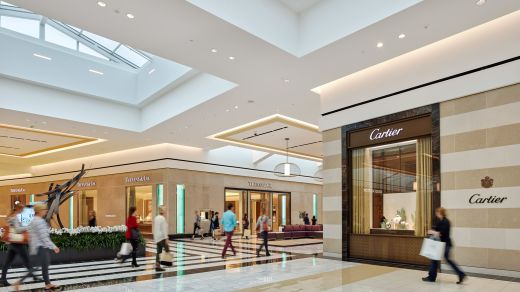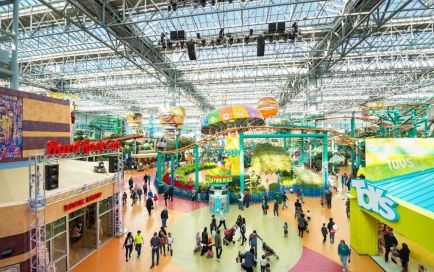There are many malls across the United States that are slowly dying. At the same time, however, there are malls that are spending millions to reinvent themselves.
According to Washington Post the dying malls we see today are following a familiar narrative of the American Mall. The cookie cutter malls that multiplied in the ‘70’s, ‘80s and ‘90s. Back in the day malls were a masterpiece to consumerism.
However, in the past decade as people started to migrate to online shopping, some well-known retailers collapsed. Abha Bhattarai, writer of the Post article, said, “The malls that didn’t evolve fast enough stumbled into a devastating cycle of dwindling traffic, lower sales and disappearing storefronts.”
There are malls that are spending millions and thriving, reinventing themselves and integrating other lifestyle activities like yoga studios, medical clinics and much more. These malls are populated with much more upscale shops.
Daniel Merkh, a junior, said, “That is an excellent strategy for malls to build up attractiveness so consumers will go there. If the malls were only just department and retail stores, the convenience of buying online would be more expedient for the customer rather than actually going to the store, as that option requires taking time out of their day when online buying can happen at the snap of your fingers. Reinventing malls so they have attractions like an ice skating rink, restaurants with affordable prices, a movie theater, arcades, and other child, adolescent, and young adult-friendly activities would bring in more people and keep the malls from losing revenue to online shopping.”
Jesse Flax, a junior, said, “Financially it wouldn’t be smart although the traffic would increase. I do not believe adding something like that would increase people’s willingness to travel to a mall. If they convert from just a shopping center to an eventful family outing type of place it could be very beneficial.”
However these specific investments are often coming at the expense of mall operators’ lower-tier properties. This has resulted in the widening divide between rich malls and poor malls.

Bhattarai said, “As of mid-November, retailers have announced plans to close more than 10,600 stores nationwide, according to real estate research firm Costar; that compares with 5,400 for all of 2018.”
Other stores such as Gymboree and Charlotte Russe have closed more than 500 stores, many of them were in malls. Some retailers, for example Macy’s, that have a stable financial footing are eliminating hundreds of underperforming stores to focus on thriving locations. The closures, again, are having an effect on lower-tier malls and shopping centers.
Here is some insight on how some students on campus shop.
For Merkh, shopping has always been in person for him. “It depends on what I’m buying. There are certain things I prefer to buy in the store like groceries. Other things that I cannot find in supermarkets I have to make trips to special stores that are out of the way. Or if I can get the item I’m looking for inexpensively by comparison to the store by shopping on Amazon, I’ll do online for those items.”
Eva Soler, a senior, said, “I really don’t shop that often besides the fact that I’m broke. I like to repurpose stuff. I prefer goodwills and other thrift stores, definitely not malls.”
Flax said, “I prefer to physically shop although online shopping is easier, and time saving the customer service is a big reason why I prefer shopping in person. Over my lifetime physically shopping has been reinforced just because how online shopping can be frustrating when there’s a size mistake or shipping mistakes.”
Nylee Segarra, a senior, said, “I am an impulsive buyer and physically like to shop. I do not like to wait or order or send things back because it doesn’t fit.”
Retail experts say malls were in trouble long before online shopping came along. The first shopping center in the United States was in Edina, Minneapolis, in 1956. It caught Americans’ attention and from there developers began looking for new opportunities to build shopping destinations to capture more attention.
Hundreds of imitations were created. Amanda Nicholson, a professor of retail practice at Syracuse University, said, “There was an explosion of one-level malls with four anchor stores, a dreary food court and a carousel in the middle.”
The number increased to 1,100 by 2008, but many of them were in rapid decline. The United States was hit by the worst recession in decades. More than eight million jobs were lost, home values collapsed and stocks lost nearly half their value. This resulted in consumers pulling back and online spending increased.



